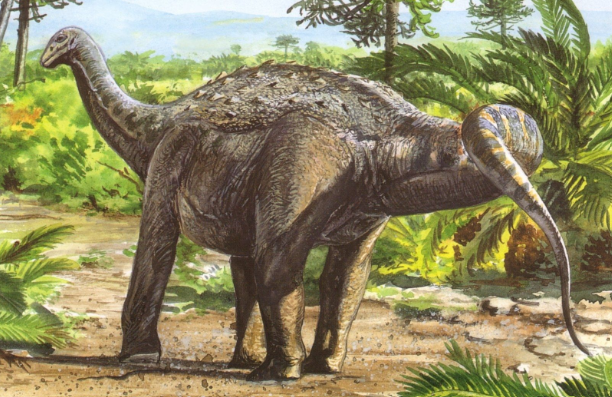Saltasaurus (Salta Lizard)
Basic facts
39 feet (12m) length
Late Cretaceous
Argentina, Uruguay
Herbivore
Saltasaurus is a genus of dinosaur belonging to the family Saltasauridae. It lived approximately 80 to 70 million years ago during the Late Cretaceous period in what is now South America, specifically in Argentina and Uruguay. The first fossils of Saltasaurus were discovered in the 1970s.
Saltasaurus was a medium-sized dinosaur, measuring around 12 to 15 meters in length and weighing an estimated 4 to 7 tons. Saltasaurus is very small compared to most other members of the Sauropoda. What sets Saltasaurus apart from other dinosaurs is its unique armor. The body of Saltasaurus was covered in bony plates, known as osteoderms, which provided protection against potential predators. These osteoderms were embedded in its skin and formed a continuous armor along its back, sides, and tail. The osteoderms of Saltasaurus can be classified into two types. The first type comprises larger oval plates, reaching lengths of up to twelve centimeters, which are keeled or spiked and might have been arranged in longitudinal rows along the back. The second type consists of small ossicles, rounded or pentagonal, measuring about seven millimeters in diameter, and forming a continuous armor between the larger plates. Saltasaurus had cylindrical teeth with spatulate points and a relatively short neck with shortened neck vertebrae.
Saltasaurus likely employed a combination of bipedal and quadrupedal locomotion, using its sturdy hind limbs for walking and its forelimbs for feeding. Its armor would have provided protection against predators such as theropod dinosaurs. Saltasaurus may have congregated in herds, offering additional defense against predators and facilitating social interactions.
